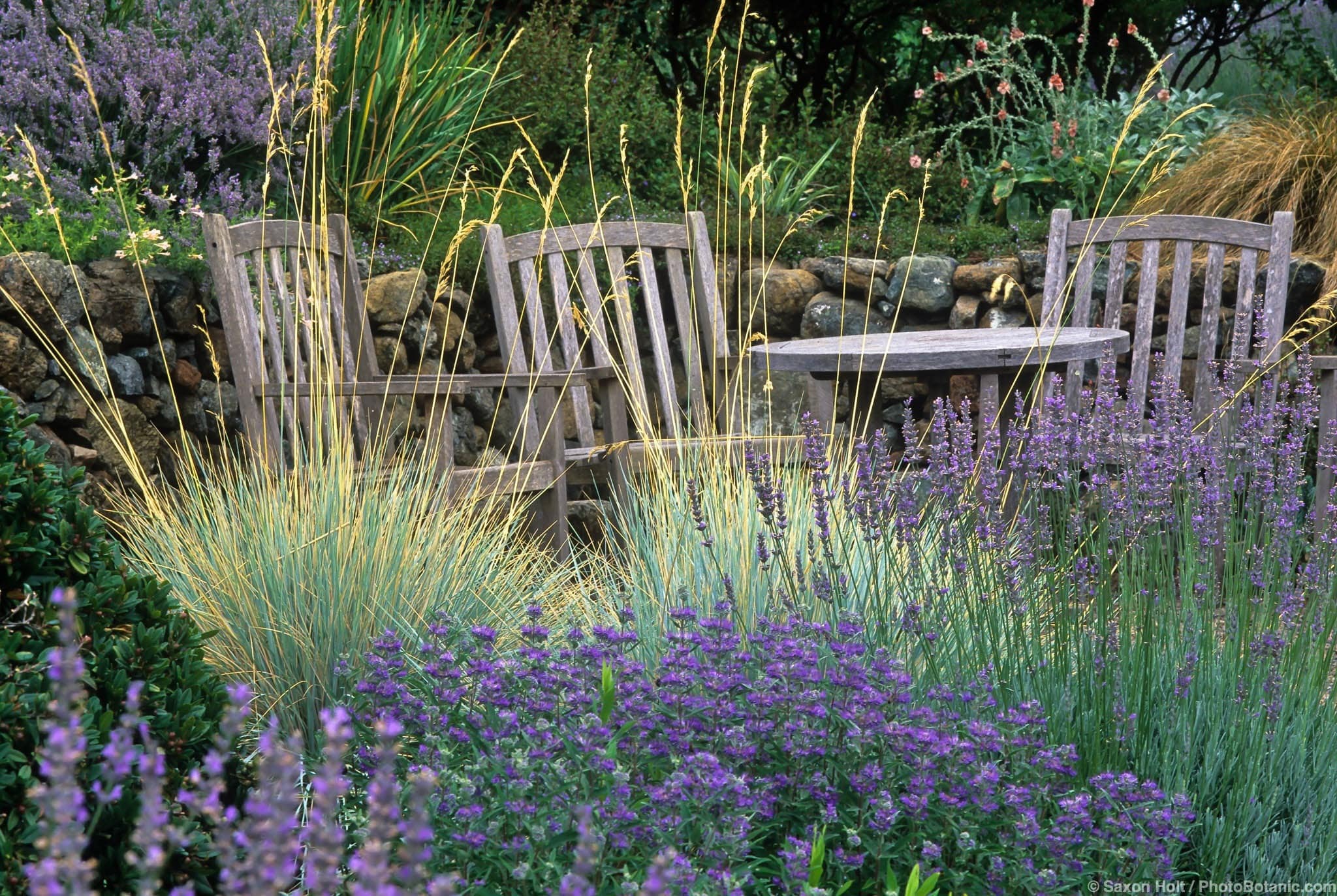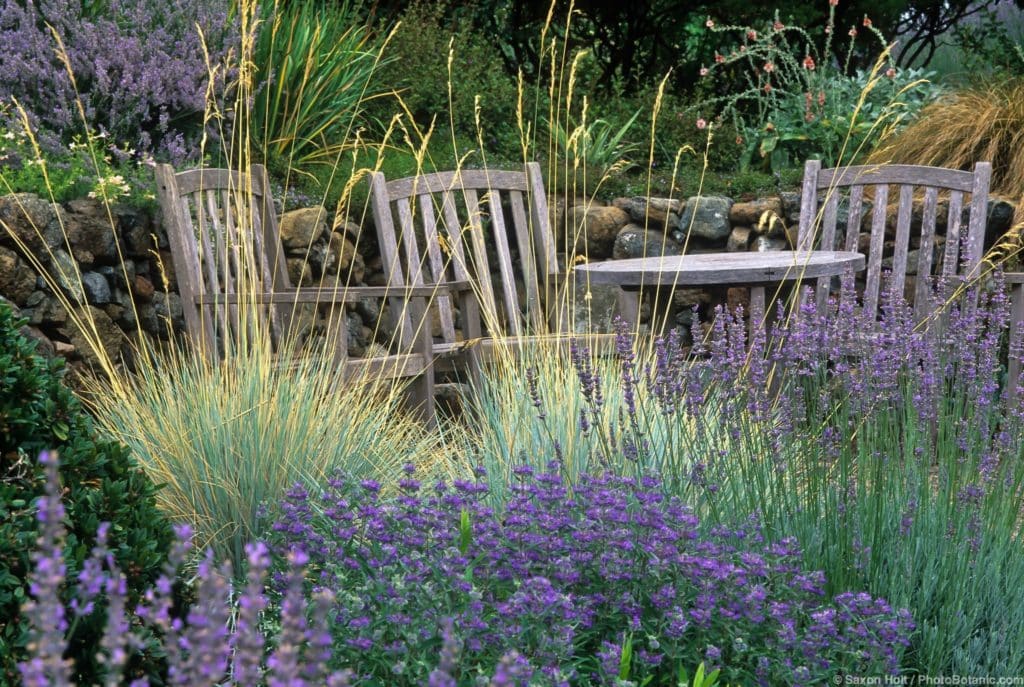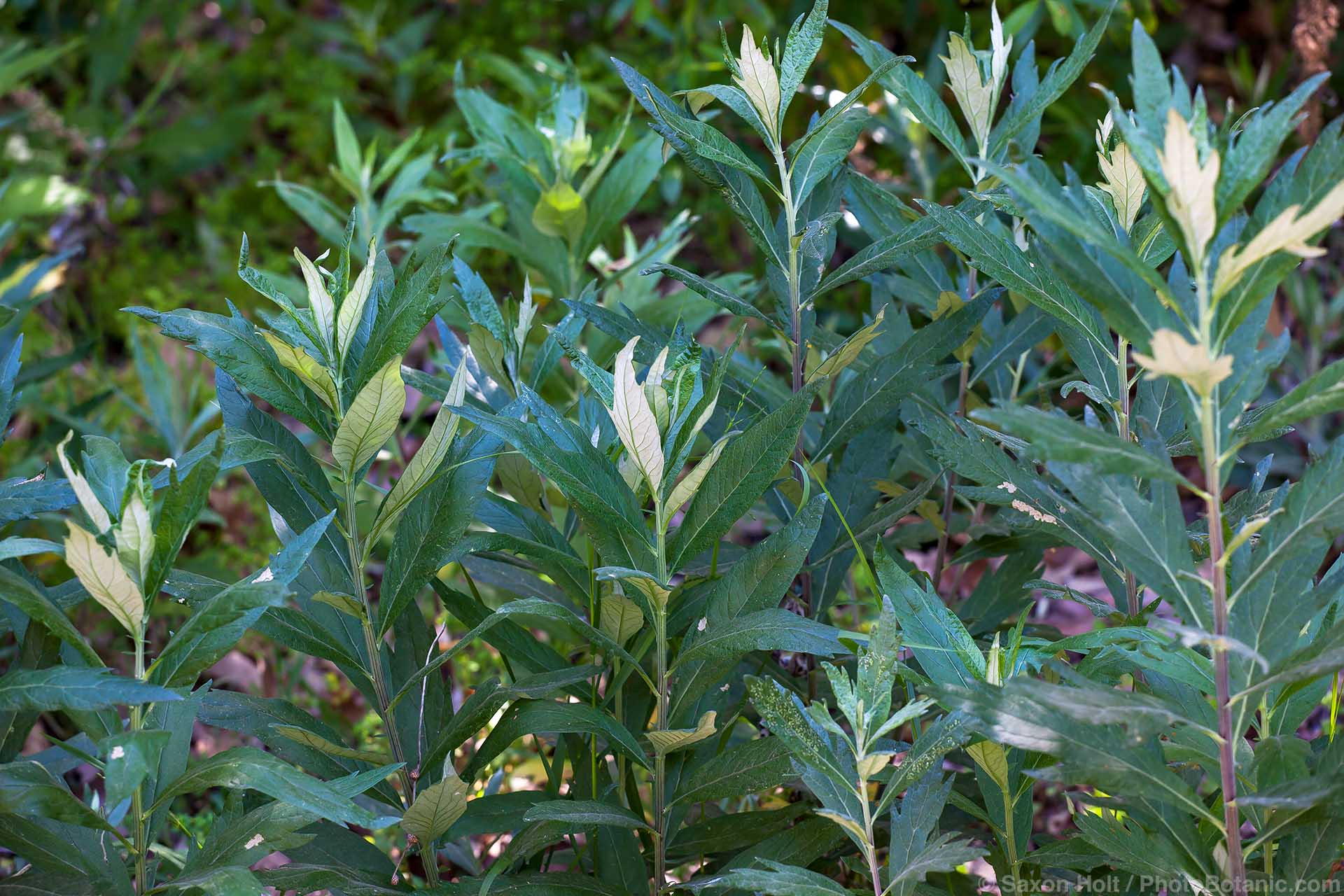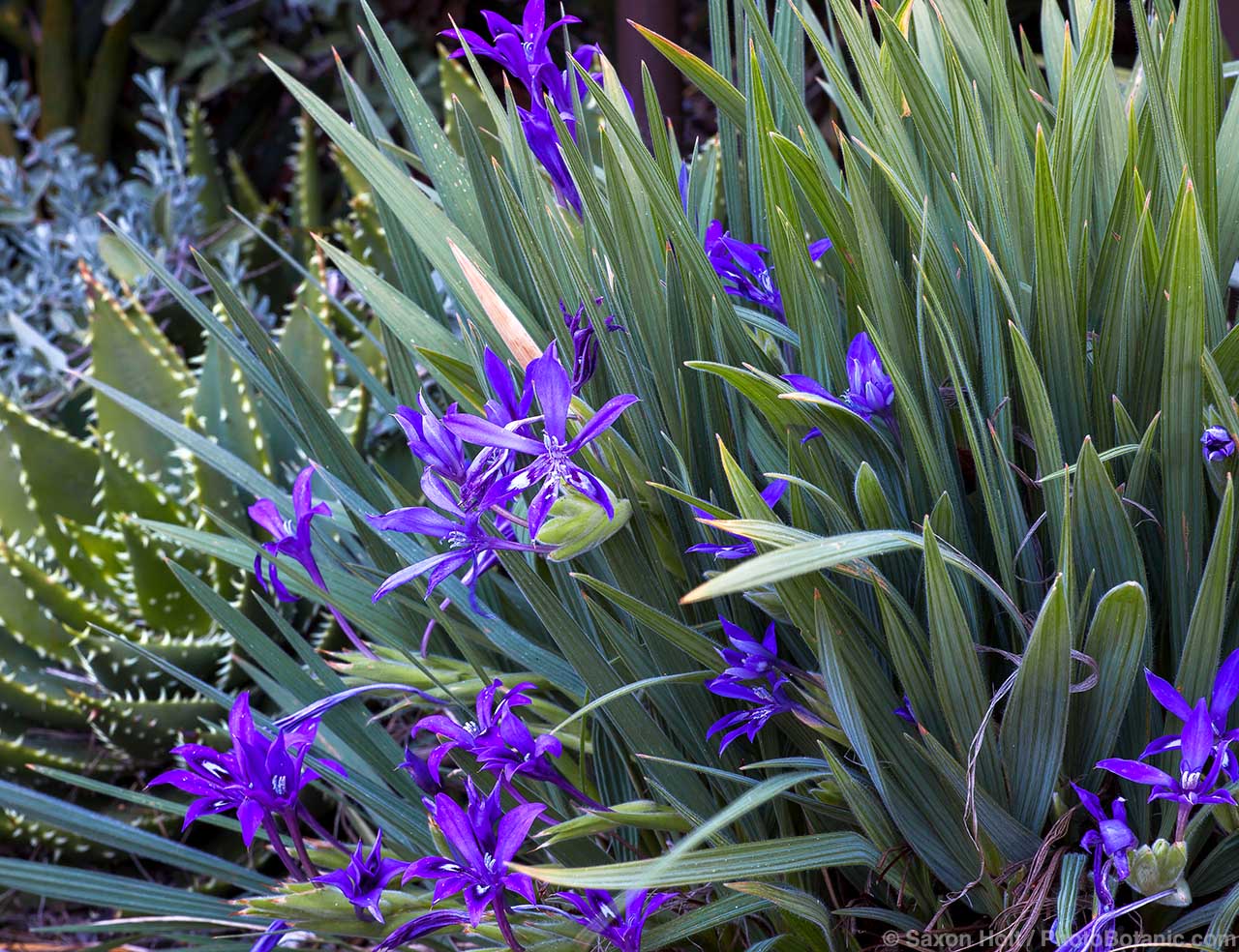Blue oat grass

Share This!

Blue oat grass with lavender
Grown well, blue oat grass (Helictotrichon sempervirens) is big on drama, its narrow, blue-green leaves forming a perfectly rounded dome when not crowded by other plants and older leaves providing a subtle infusion of tawny gold. In early summer flowerheads arise on tall stalks two feet above the foliage, turning a matching golden color in late summer or fall.
A clump-forming ornamental bunchgrass, up to two feet tall and three feet wide at maturity, blue oat grass likes full sun near the coast, but seems to prefer part shade or afternoon shade inland. This grass must have good to excellent drainage, good air circulation, and not too much water in summer. Even in winter, heavy rainfall may result in root rot if the plant is not kept free of excess dead leaves and other debris around the base.

Young plants of blue oat grass with fremontia
This is a grass I do not cut back in fall or in spring, in large part because it looks good year round with a little maintenance. This cool-season grass is evergreen to semi-evergreen where winters are mild. It would, unnecessarily, look quite sad if cut back the two-thirds recommended for cool-season grasses in colder climates. Warm-season grasses (e.g., Leymus condensatus, Bouteloua gracilis), on the other hand, can be cut almost to the ground in early spring, look acceptable in butchered dormancy, and come back quickly in mid- to late spring or early summer.
In lieu of cutting back blue oat grass, I rake out old leaves with a steel rake two or three times a year. This is a good reason for spacing these plants at least three feet apart (another reason is that wide spacing displays the full glory of their shape and size). I lay a tarp around the plant to catch most of the old leaves that are raked out, but even then some of the very fine leaves are scattered about the garden. It’s a messy job, but easy to do, and the plant will thank you for it.
It’s important to know whether the grass you have is a cool-season or warm-season plant. Trimming cool-season grasses too harshly at any time of year may harm them irreparably. Cool-season grasses such as blue oat grass perform best where summers are not too hot and winters are not too cold. If you garden in a hot southern or inland climate, afternoon shade is pretty much required.
Helictotrichon sempervirens is native to southwestern Europe, but thrives in any similar summer-dry climate if its simple needs are met. Like many tough-leaved grasses, it seems to be reliably unpalatable to deer.
Share This!
Related Articles
By: Nora Harlow
By: Nora Harlow
By: Nora Harlow





